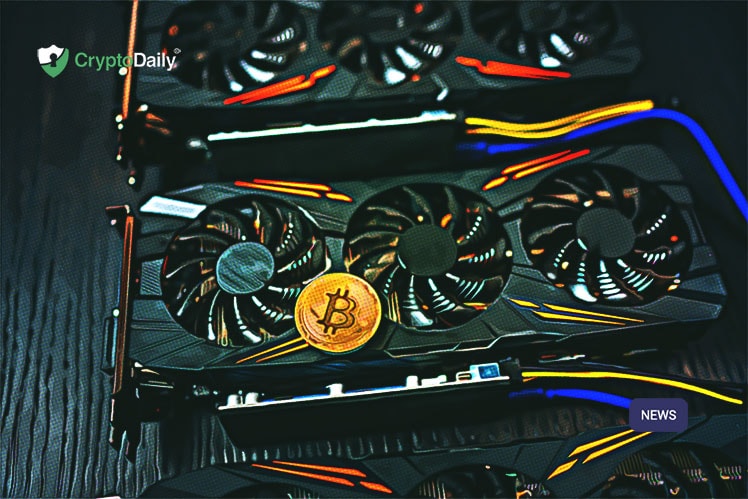In approximately 30 days from now, one of the most significant events in Bitcoin and crypto-economics will occur; the third-ever halving of Bitcoin rewards. So what does that mean exactly? This event will increase the mining algorithm difficulty and cut the reward given to Bitcoin miners for successfully mining a new block on the Bitcoin blockchain. The reward will decrease from the current 12.5 BTC down to 6.25 BTC; reducing the Bitcoin entering circulation by 50%. This anti-inflationary process has historically driven significant gains for Bitcoin, miners and the overall crypto economy, but what could the halving event look like in the midst of a pandemic-related economic recession?

Back in late March, RRMine’s Global CEO Tsou Yung-Cheng and a group of expert Bitcoin miners held a roundtable discussion during the 8btc Online Summit. It was during this session that the group weighed in on the upcoming havling event and its potential impact on the mining sector. The biggest concern from Bitcoin miners was the impact that the halving would have on mining outputs. Yung-Cheng calmed these miners’ concerns when stating:
“The halving will not cause a sharp reduction in Bitcoin production and miners who have survived from the March market will see no big impact… On the day of the halving, it is likely 40% of mining rigs will shut down, and then Bitcoin hashrate will drop from 100E to 60E… within 1 to 3 weeks, the difficulty of the entire network will reduce by about 40%, leading to a big increase in Bitcoin production.”
Yung-Cheng commented further on his forecast on the Bitcoin production in the weeks following the halving:
“The bitcoin mined at the end of May, compared with that in March, will be temporarily reduced by 25% on the halving day and will increase by about 15% when the mining difficulty sees another drop.”
The CEO’s further projections into June look both interesting and challenging for Bitcoin and miners of the asset:
“When the wet season comes in early June, Bitcoin output and the hashrate will reach a new dynamic balance, then there comes the phase that tests various platforms’ cost per hash and their operations.”
Yung-Cheng’s RRMine opened for business in 2017 and has passed some critical crypto market stress tests quite smoothly since then. By researching the operating logic of the mining industry and developing a sound strategy built within the confines of its dynamic rules, the cloud mining platform had built sustainable, nimble and long-term measures early in their operation to ensure continuity and growth. By utilizing the hashrate cost advantage at a rate far below the market average, RRMine’s positive operation logic of financial risk control is enabled to keep the business afloat in even the most turbulent of crypto market climates, inclusive of their diversified hashrate derivative products.
“RRMine helps users to fight against the potential market risks from a multi-dimensional. RRMine users will not be greatly affected in the yield from the cloud mining contract even after the block reward is halved. With the new dynamic balance of the whole network established and the arrival of the wet season, the difficulty in mining will reduce, the mining market will be more optimistic after digestion and consolidation.”
Li Wei, a seasoned Bitcoin miner, crypto miner, and self-proclaimed “tech geek” had some good insight to add to the topic:
“Bitcoin has proven its value after a decade of development. The relationship between the halving effect and the bull market is not obvious, the halving is a reduction in the supply and serves as a supply-driven catalyst for technological innovation for the mining industry.”
The price of Bitcoin is determined by, both, supply and demand, and the adjustment of the market to the price is a process of its own. Wei believes that after the reward is halved, the price will ultimately depend on the market’s demand for Bitcoin.
“In this sense, instead of the halving, the economic situation, changes in the international situation may trigger the next bull market. From a technical perspective, the cloud computing industry, after a decade of development, has formed a complete ecological system. In the past, cloud computing used to provide storage service, the demand for computing power in the future will become a new focus.”
Cloud computing has experienced two different paths, one is that of the centralized computing power represented by the early days of large private tech organizations like Google Cloud and Ali cloud. The other is the new and game-changing decentralized computing power built on blockchain like RRMine’s mining activity, and this path has become a significant one to be watched carefully over the next decade as a growing demand of decentralized on-demand compute is on the rise globally.
Xu Weizhuo also weighed in during this popular roundtable session. Weizhuo is a traditional education investor who also turned into a miner commented on the topic:
“In terms of supply and demand, Bitcoin production [supply] globally will decrease from a total of 1,800 BTC per day to 900 in May this year, while the demand for Bitcoin will keep the same and may even increase. In this dynamic supply and demand relationship, Bitcoin’s deflation model will push its price and value higher.”
Xu is clearly bullish on Bitcoin over the long term, but did add:
“ In the past two halvings, the bull did not come immediately after the halving. The Bitcoin price may stay sideways for a period of time or even see a decline after the halving, but for miners, it is wise and the right way to keep mining and holding Bitcoin.”
The halving paired with Bitcoin prices either unchanged or in a decline will proceed to put some of the medium and small-sized mining companies with higher mining costs out of business and will result in hashrate decline, difficulty drops in mining, and then ultimately result in a Bitcoin production increase.
“In the face of the uncertainty of the future, we need to keep learning and growing, and to break the stereotyped thinking that to acquire wealth by time.”
Xu added that she has done this by “investing in RRMine cloud mining contracts.”
The fourth speaker during this 8btc session was Sis V; the CEO of Hashrate Club and a node investor of RRMine. V believes parallels can be drawn between the blockchain and the internet of the year 2000; full of opportunities and innovations.
“The halving will eliminate a number of outdated old machines and small and medium-sized miners with low mining efficiency, in such a context, the industry will be reshaped. Those who have made preparation and layout in advance will seize the opportunity. The price of Bitcoin may not surge immediately after the halving, which would lead to mining difficulty decrease and give miners a chance to continue their bottom-hunting.”
Sis went on to mention how the traditional finance and crypto mining industries are like two parallel worlds that share very similar logic but unequal opportunities. Being a node investor with deep involvement in RRMine’s business since its early stage, V has witnessed the uprise of the cloud mining industry. Through practice, Sis closed by saying:
“What a man can earn is the money within his scope of cognition… hopefully, more people will find their own time machine in the parallel world (digital world) and seize this opportunity”
The final comments were from the founder of Asia Blockchain Technology Association, Dai Yi. Yi believes traditional finance has cyclical rules that are in motion for hundreds of years.
“The market performance after the past two halvings and non-linear thinking can help us deduce the trends of the market.”
Dai recommended that investors go out and research the history of traditional finance and that of Bitcoin, from which trends can be observed amongst the two.
“Investing itself is something that only a few people who can delay gratification and refuse to follow the market sentiment can succeed. Miners willing to commit to the primary market for Bitcoin mining are more aristocratic than speculators in the secondary market, as they are able to dig deeper into the underlying values and are indifferent to short-term gains or losses.”
In lieu of current market turmoil from the COVID-19 pandemic, the mining industry is ultimately the production combination whose cost is lower than the secondary market. As a result, during this period, miners will have access to generous discounts from mining machine makers, and electricity and site rental will be subsidized by the state, and further, cloud mining customers could have the opportunity to gain more hashrate at low costs. Yi closed by saying:
“I believe that many RRMine users agree with me.... They understand the underlying logic of the cloud mining industry, what we need to do is to withstand the cycle fluctuations and all will be paid off.”
It is quite clear that there are, both, some excellent opportunities and short-term concerns for Bitcoin and the mining industry in the upcoming halving in May. Hearing from these leading mining industry professionals, it becomes clear that the current economic climate may likely hold impact on the short-term valuation of Bitcoin, but also drive opportunity for miners to cash in on current lower prices to mine as a result of subsidies and other discounts from declining business. Parallels can be drawn amongst traditional finance and crypto finance when looking at historical data to compare against. While ultimately, there is no exact science or formula to predict what Bitcoin will do after the halving does occur in the next month, these seasoned crypto experts have a good sense of possible outcomes based on experience. With RRMine’s time-tested business model and multi-pronged strategy to mining, it appears the future for the company and of crypto mining looks bright over the long term.
Marcus Henry is an American Journalist with over 12 years working in the tech industry. He has been actively involved in the crypto community for the past three years and currently works out of Austin, Texas. He covers breaking news, writes perspective pieces and reflections, and conducts interviews with industry professionals and community members. Follow Marcus Henry on Twitter- @MarcusHenryHODL
Disclaimer: The information above does not constitute investment, financial, trading or any other sort of advice and you should not treat any of my content as such. I do not recommend the purchase, sale, or holding of any cryptocurrency or other product and nothing I write about should be deemed as an offer to purchase, sell, or hold a cryptocurrency or other product or service. Please do your own research and consult a certified financial professional before making any investment decision.
Investment Disclaimer








